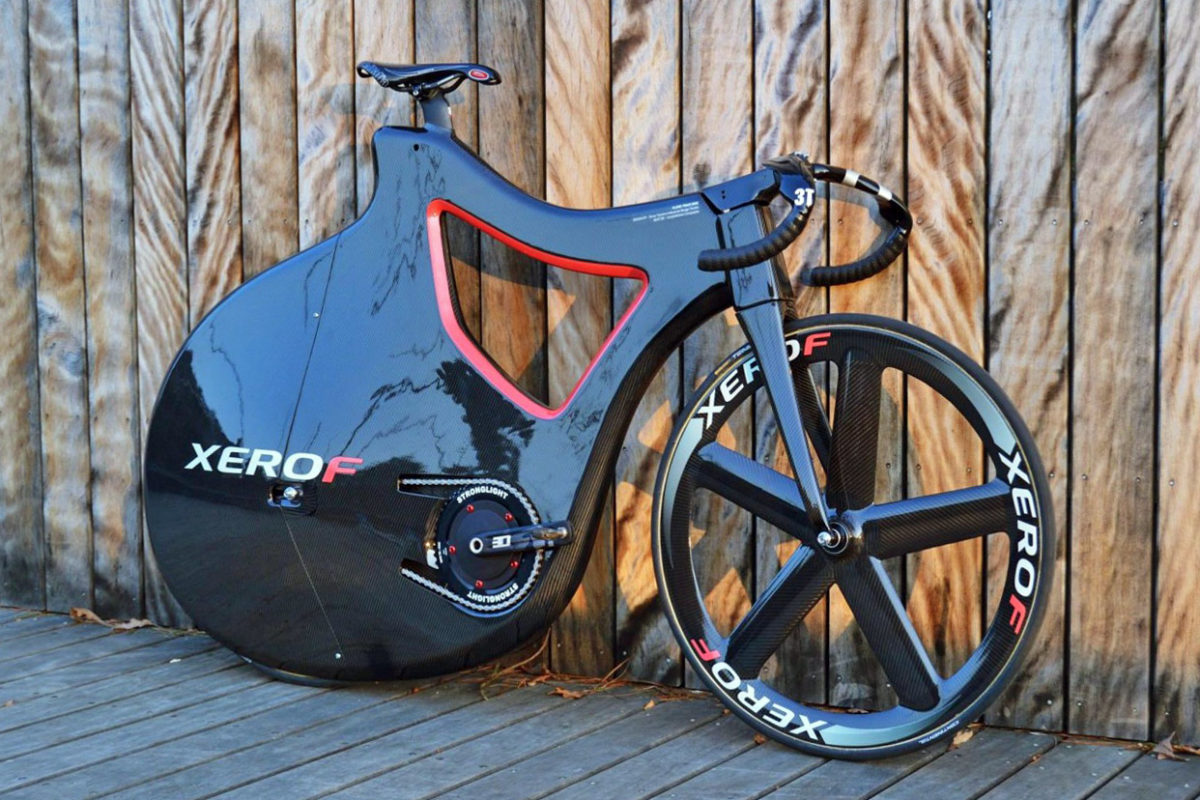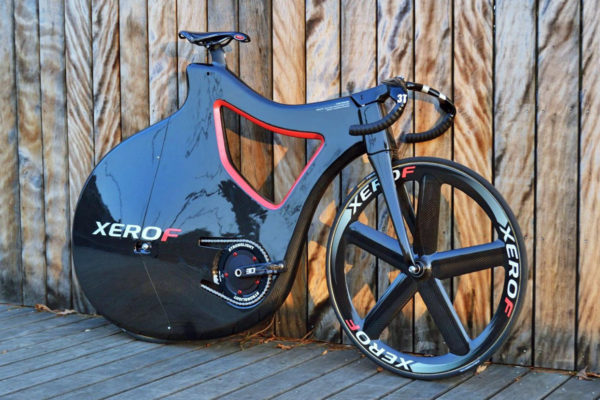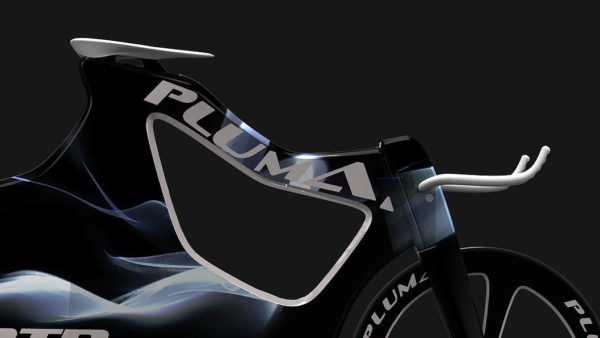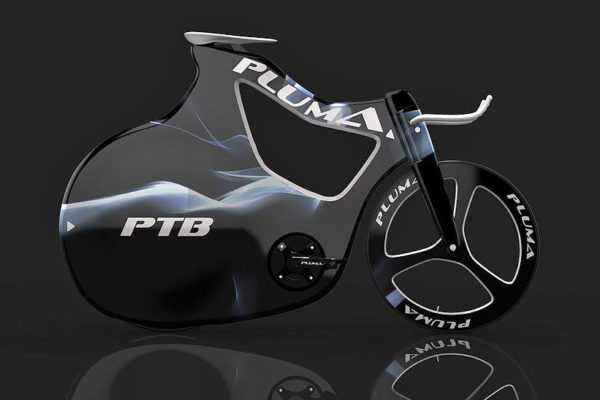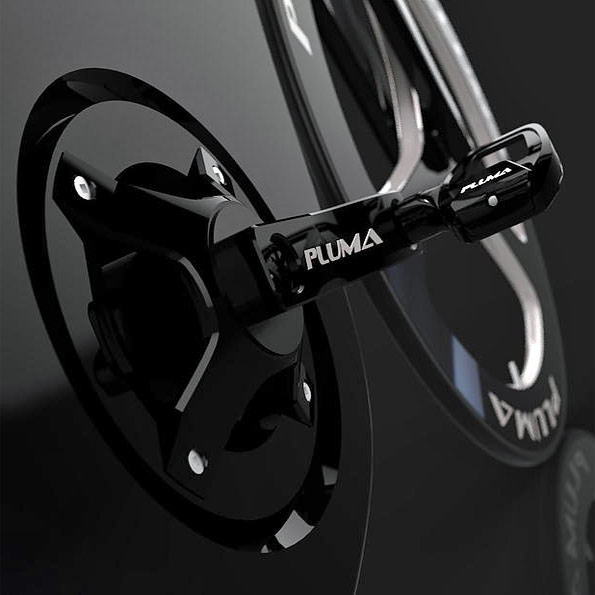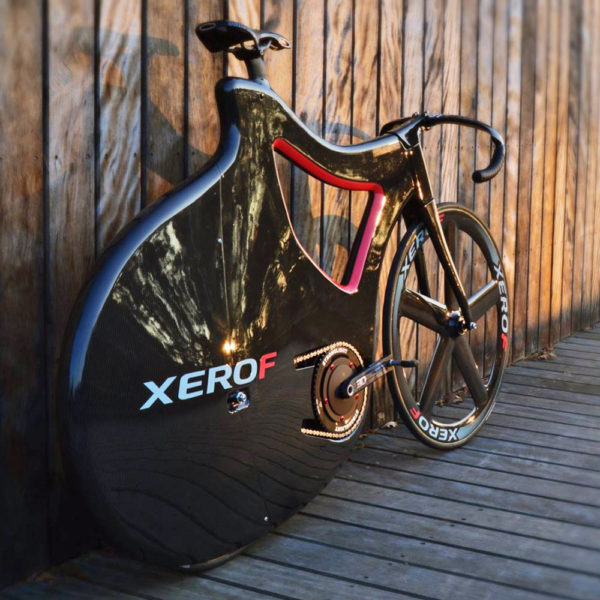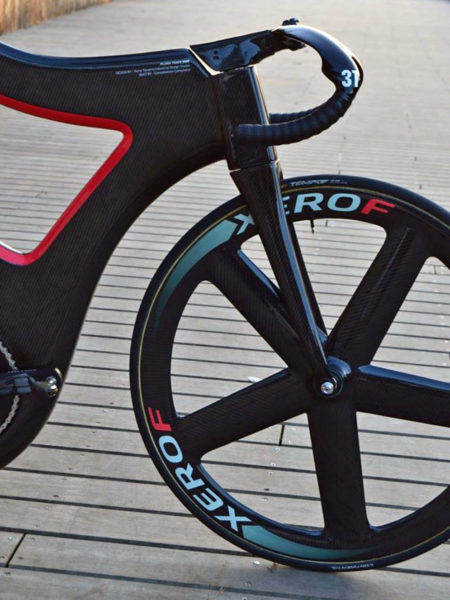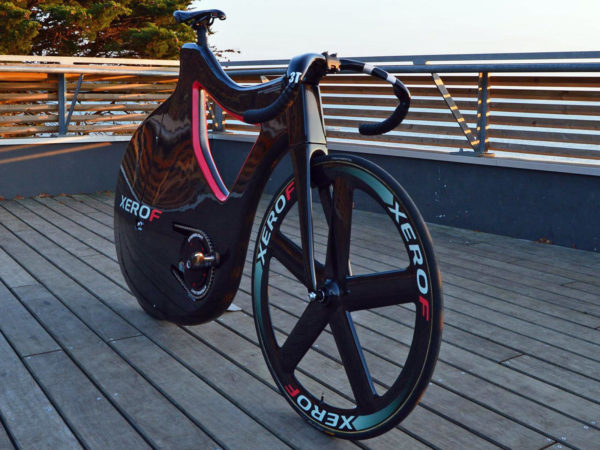Almost seven years ago Portuguese industrial designer Nuno Teixeira came up with a concept for a fully-faired carbon fiber track bike, named the Pluma. The idea of the design named after a feather was pretty straightforward – to make a track bike as slippery in the wind as possible by enclosing everything from the cranks back inside of a smooth carbon/kevlar fairing. Of course it is never so easy to turn a concept bike into reality, but Teixeira didn’t give up over the years. And now with the help of French carbon specialists at Constellation Composite and another year of development, they’ve built the original into a functional prototype for a Swiss client…
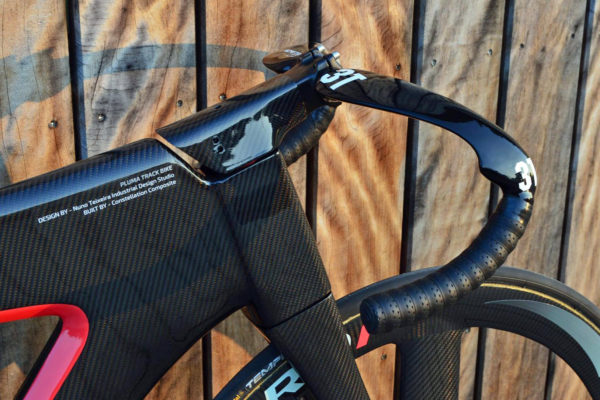
Finally ready to hit the track the Pluma has seen a bit of refinement to make it rideable. That meant cutting the standard chain drivetrain into the cowl, as well as dividing the fairing into two pieces that come together over the rear wheel allowing for tensioning of the chain and removal of the wheel.
The front end also gets updated a bit with a slightly more standard stem arrangement to provide more adjustability of fit, and a conventional steerer tube/fork design.
Teixeira had claimed from the original concept that as a side benefit of the rear wheel cowl design, most of the moving parts of the bike became enclosed, protecting riders from the motion of the drivetrain in the event of a crash in the bunch.
In the end the Pluma is constructed of a carbon fiber sandwich over top of a PVC foam core. It gets propelled by a Rotor 3D crankset with a 51 x 15 gear ratio. Even though it is enclosed, the bike still uses a disc rear wheel to minimize turbulence inside of the fairing.
Wheels then are a PRO track carbon disc out back and a PRO 5-spoke carbon track wheel up front, both wrapped in Continental Tempo II track tubulars. The bike uses a conventional 31.8 stem wrapped in a custom fairing to clamp the 3T Scatto LTD track sprinter’s bar. The remainder of contact points are finished with a Selle Italia Flite saddle and a set of Speedplay Zero pedals.
